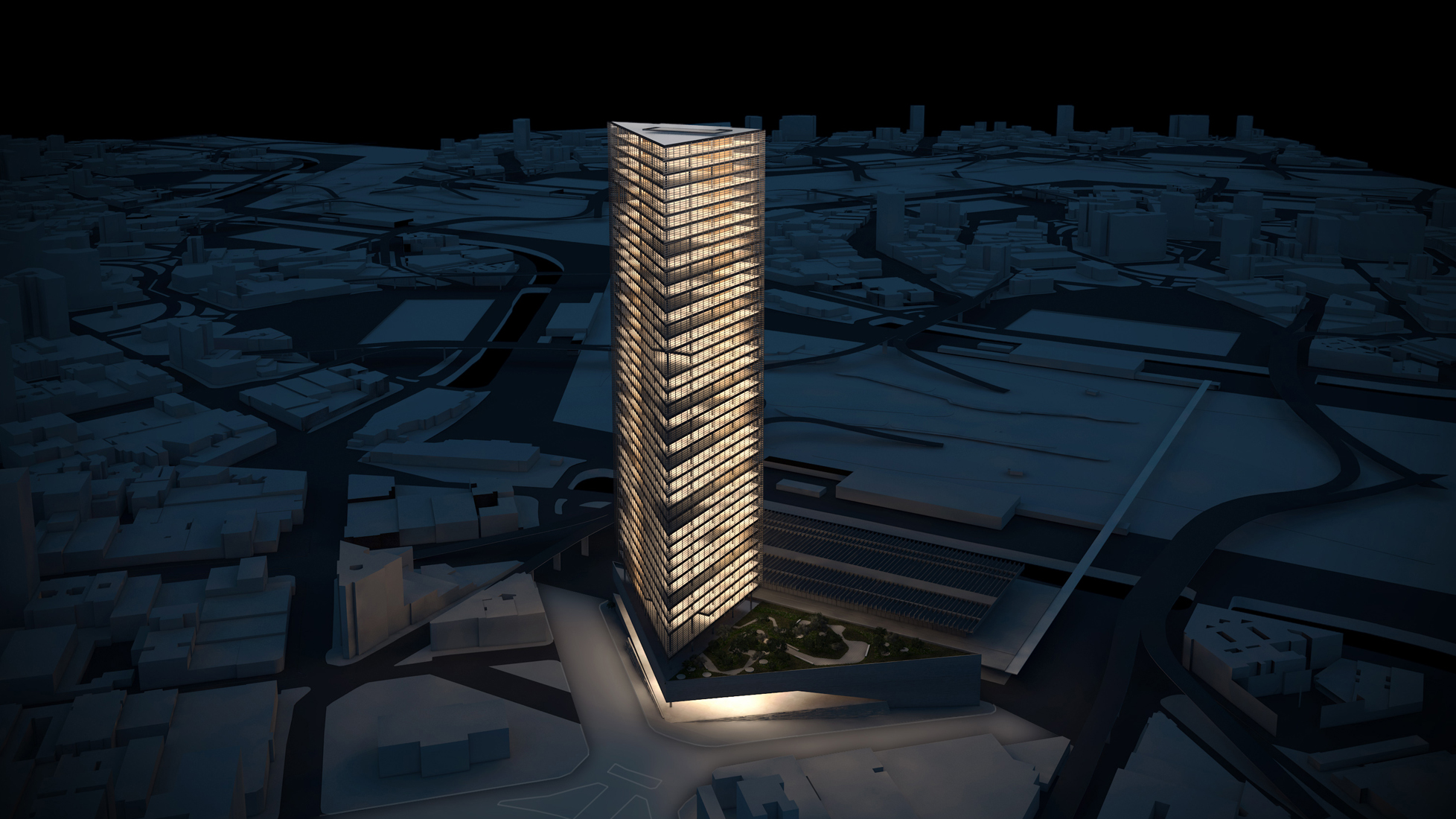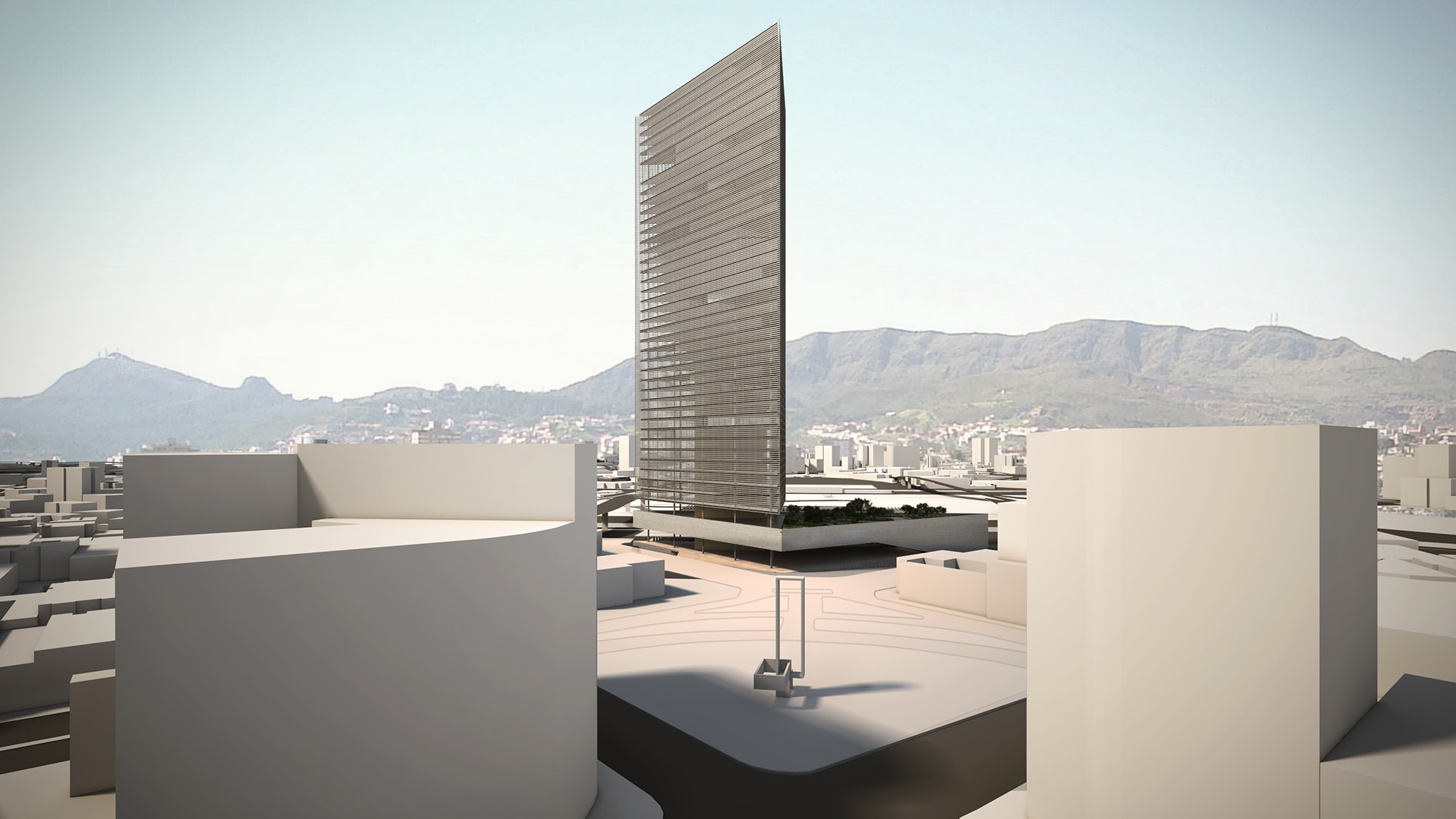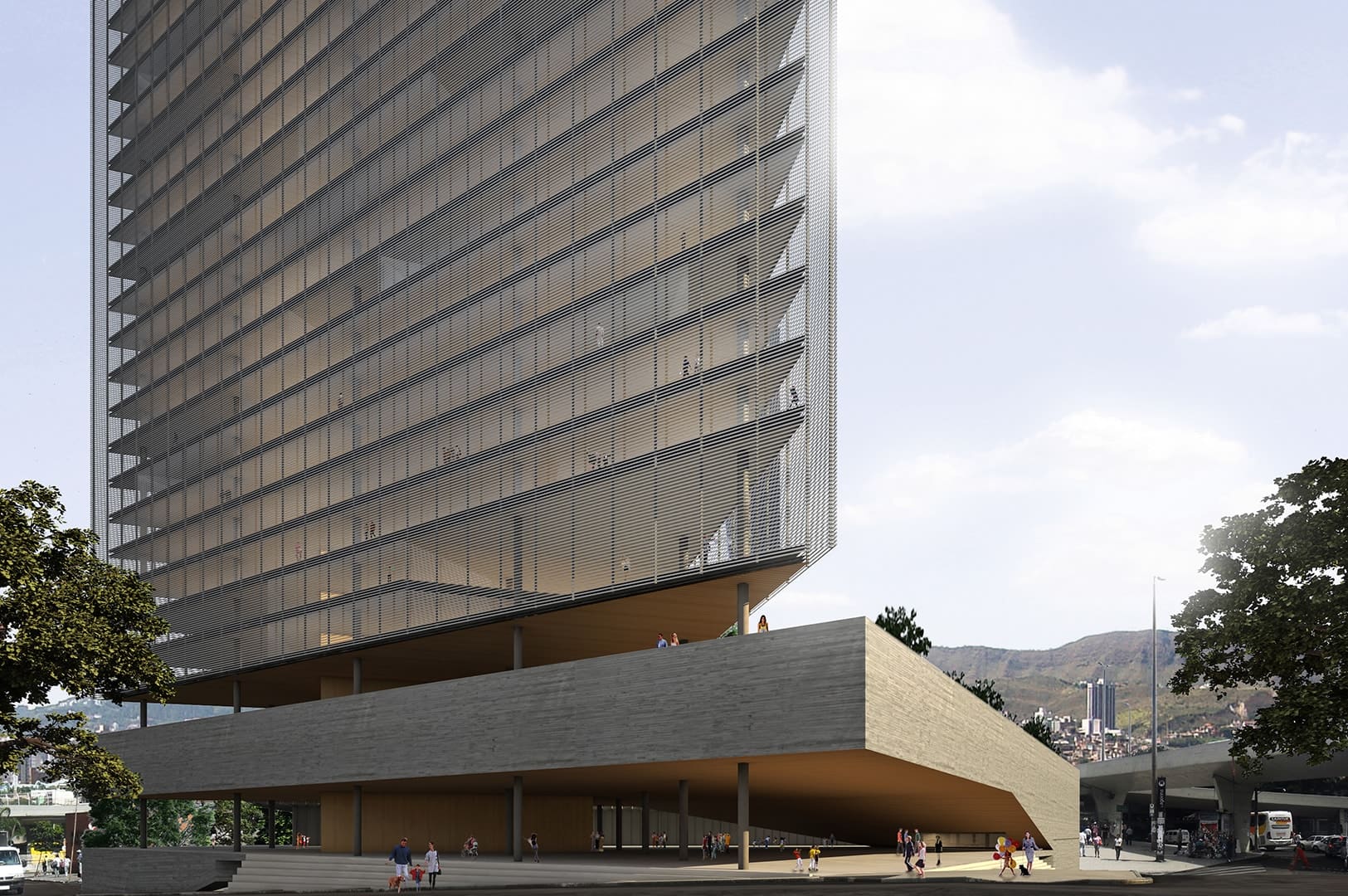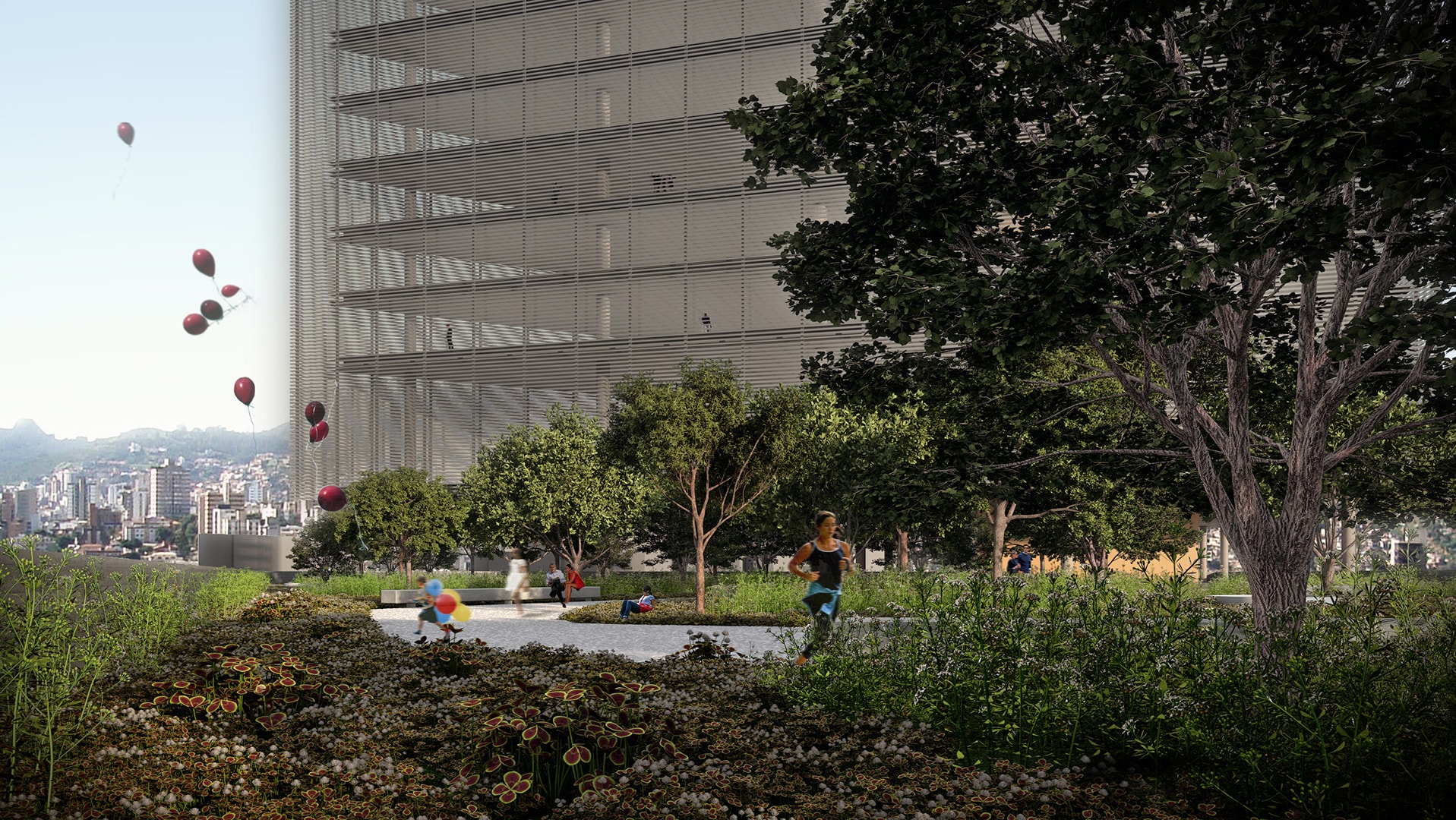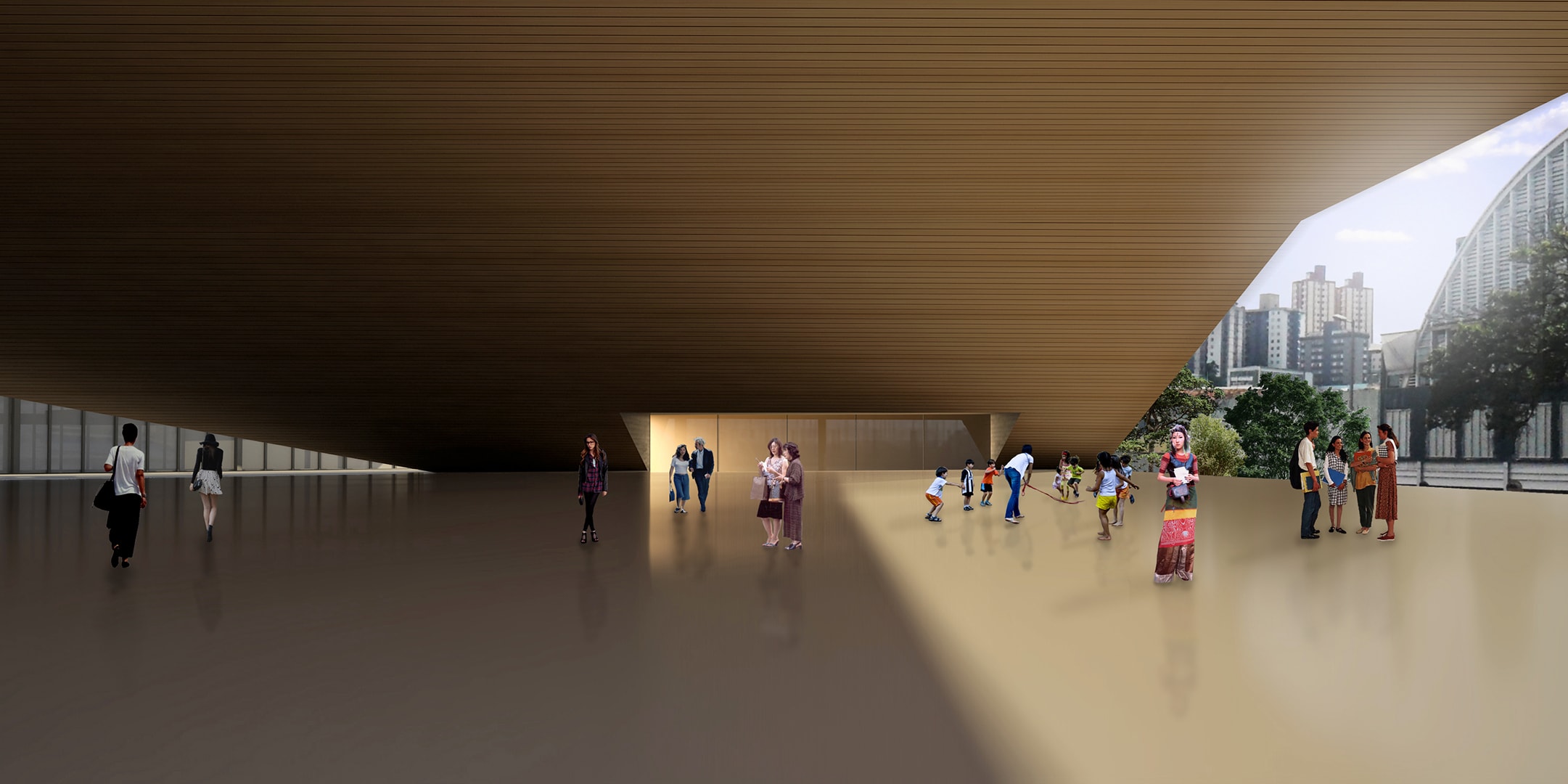The pedestrian flow along the axis of Afonso Pena street – entering on the avenue level (at elevation 846m) – continues walking freely until the existing Bus Terminal building, northwest of the site. There is no obstacle in the topography of the city: perhaps a slight incline of maybe 2% on the square grounds – not noticeable to the pedestrian – and which makes it possible to arrive at the Bus Station level.
A light metal rail on the ground floor makes the connection between the civic square and the Bus Station. The covered square, having a 7m ceiling-height, conglomerates the people on the ground floor in the Administrative Center site: a non-pillared span of 60m that could easily be used independent of any weather conditions for civic activities; an area for popular manifestations whether they be for parties or political activities.
The grounds are made of concrete plaques, resistant to everyday use; while the ceiling is of wood, thus intensifying the cozy sensation of the public space. As there is no direct contact with any rain this type of ceiling needs little upkeep.
While the land is completely empty and left entirely free and open – the public floor – and shelter urban flows, including the transportation from a side walkway, leaving from the covered square level and crossing Ribeirão Arrudas; the entry flow to the Administration Center is from a new pedestrian street at a lower level (at elevation 843.20m) which transversely connects Paulo de Frontin Street to Saturnino de Brito Street.
Besides connecting the urban fabric in these surroundings, this solution would encorage the side streets to be transformed and they could as well organize the project. This is possible because, at the same time that the square rises to seek the elevation 847.40m of the bus station the side streets lower in the direction towards Ribeirão Arrudas.
The surroundings around the building were refurbished to incorporate the new headquarters precisely in the urban fabric. At the end of the Afonso Pena Street axis there is a system of sidewalks and car tracks, all at the same level, that encourages the reduction of the speed of the cars and integrates the pedestrian axis to the new covered civic square.
The original project from Rio Branco Square – with its beautiful ground design – should be recuperated even if the existent trees need be maintained. All of the elevated gardens of the surroundings should be lowered as the vegetation permits in order to the entire ground of the area to be at the same height level, without any circulation barriers.
The available area on the street of the old State Secretary of Agriculture, Livestock and Supply, was left free for future expansions or construction of a comercial center. Lastly, a new pedestrian walkway – connected to the train and the lower level streets – was designed to make the transposition of Ribeirão Arruda, passing through the bus station, until arriving at the civic square in its northeastern portion.
Studio MK27
PROJECT FOR CONTEST
-
location > belo horizonte . mg . brazil
project > july . 2014
-
architecture > studio mk27
architect > marcio kogan
co-architect > gabriel kogan
architecture team > constanza cortes . lair reis . renata furlanetto
communication team > carlos costa . mariana simas
interiors team > eline ostyn . pedro ribeiro
The pedestrian flow along the axis of Afonso Pena street – entering on the avenue level (at elevation 846m) – continues walking freely until the existing Bus Terminal building, northwest of the site. There is no obstacle in the topography of the city: perhaps a slight incline of maybe 2% on the square grounds – not noticeable to the pedestrian – and which makes it possible to arrive at the Bus Station level.
A light metal rail on the ground floor makes the connection between the civic square and the Bus Station. The covered square, having a 7m ceiling-height, conglomerates the people on the ground floor in the Administrative Center site: a non-pillared span of 60m that could easily be used independent of any weather conditions for civic activities; an area for popular manifestations whether they be for parties or political activities.
The grounds are made of concrete plaques, resistant to everyday use; while the ceiling is of wood, thus intensifying the cozy sensation of the public space. As there is no direct contact with any rain this type of ceiling needs little upkeep.
While the land is completely empty and left entirely free and open – the public floor – and shelter urban flows, including the transportation from a side walkway, leaving from the covered square level and crossing Ribeirão Arrudas; the entry flow to the Administration Center is from a new pedestrian street at a lower level (at elevation 843.20m) which transversely connects Paulo de Frontin Street to Saturnino de Brito Street.
Besides connecting the urban fabric in these surroundings, this solution would encorage the side streets to be transformed and they could as well organize the project. This is possible because, at the same time that the square rises to seek the elevation 847.40m of the bus station the side streets lower in the direction towards Ribeirão Arrudas.
The surroundings around the building were refurbished to incorporate the new headquarters precisely in the urban fabric. At the end of the Afonso Pena Street axis there is a system of sidewalks and car tracks, all at the same level, that encourages the reduction of the speed of the cars and integrates the pedestrian axis to the new covered civic square.
The original project from Rio Branco Square – with its beautiful ground design – should be recuperated even if the existent trees need be maintained. All of the elevated gardens of the surroundings should be lowered as the vegetation permits in order to the entire ground of the area to be at the same height level, without any circulation barriers.
The available area on the street of the old State Secretary of Agriculture, Livestock and Supply, was left free for future expansions or construction of a comercial center. Lastly, a new pedestrian walkway – connected to the train and the lower level streets – was designed to make the transposition of Ribeirão Arruda, passing through the bus station, until arriving at the civic square in its northeastern portion.
Studio MK27





